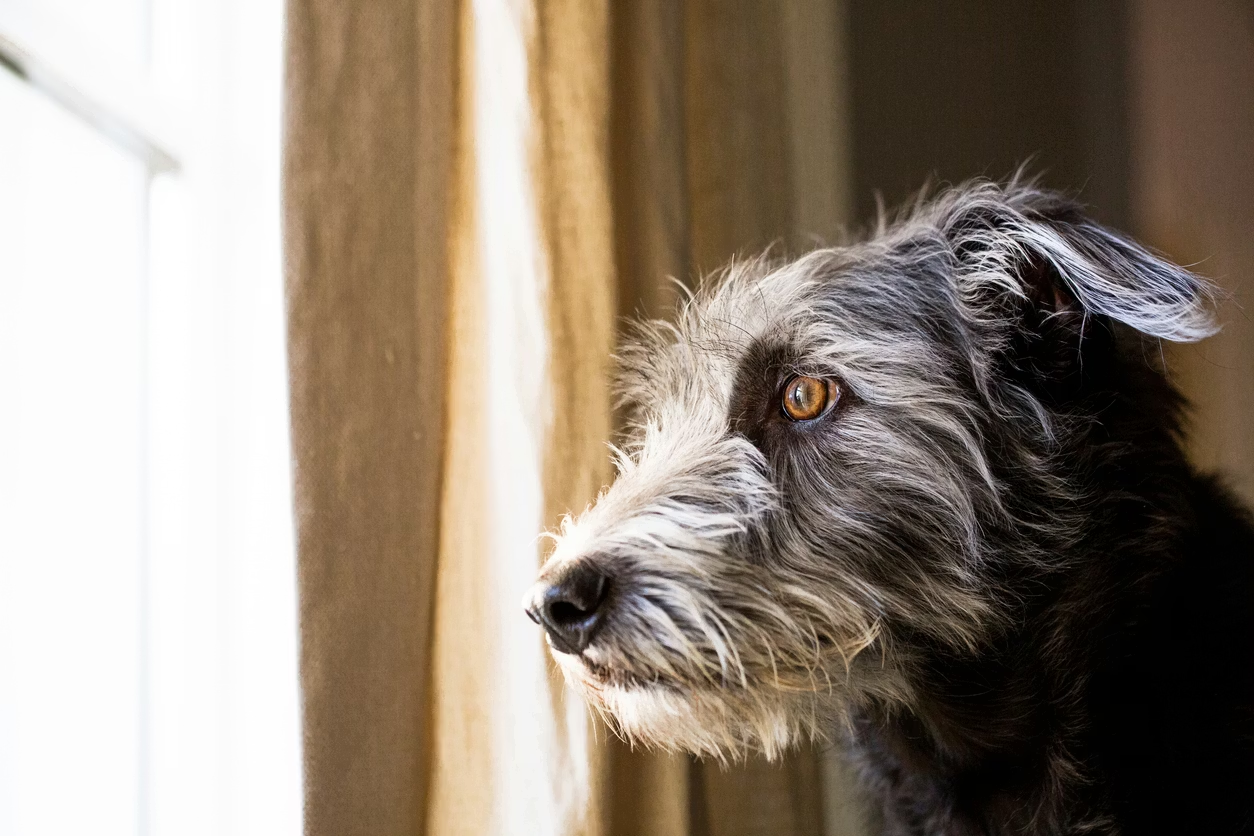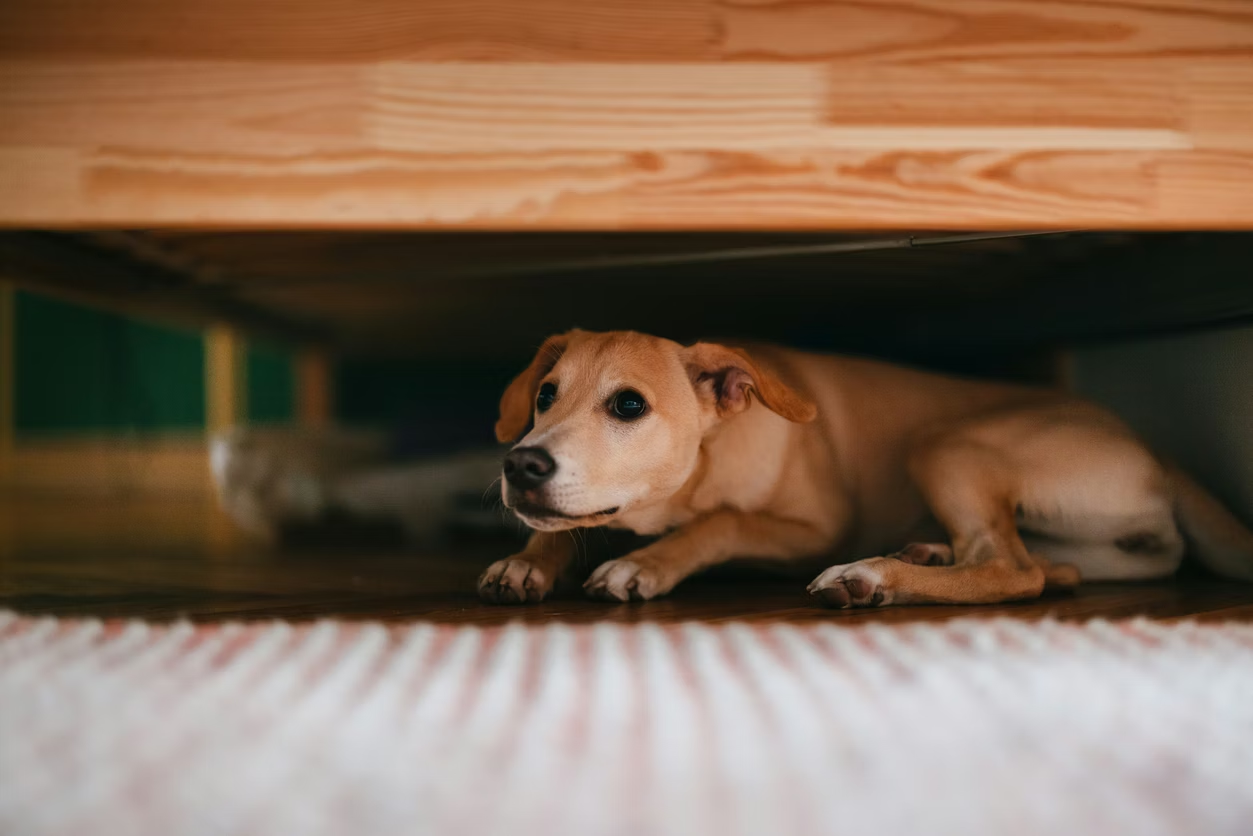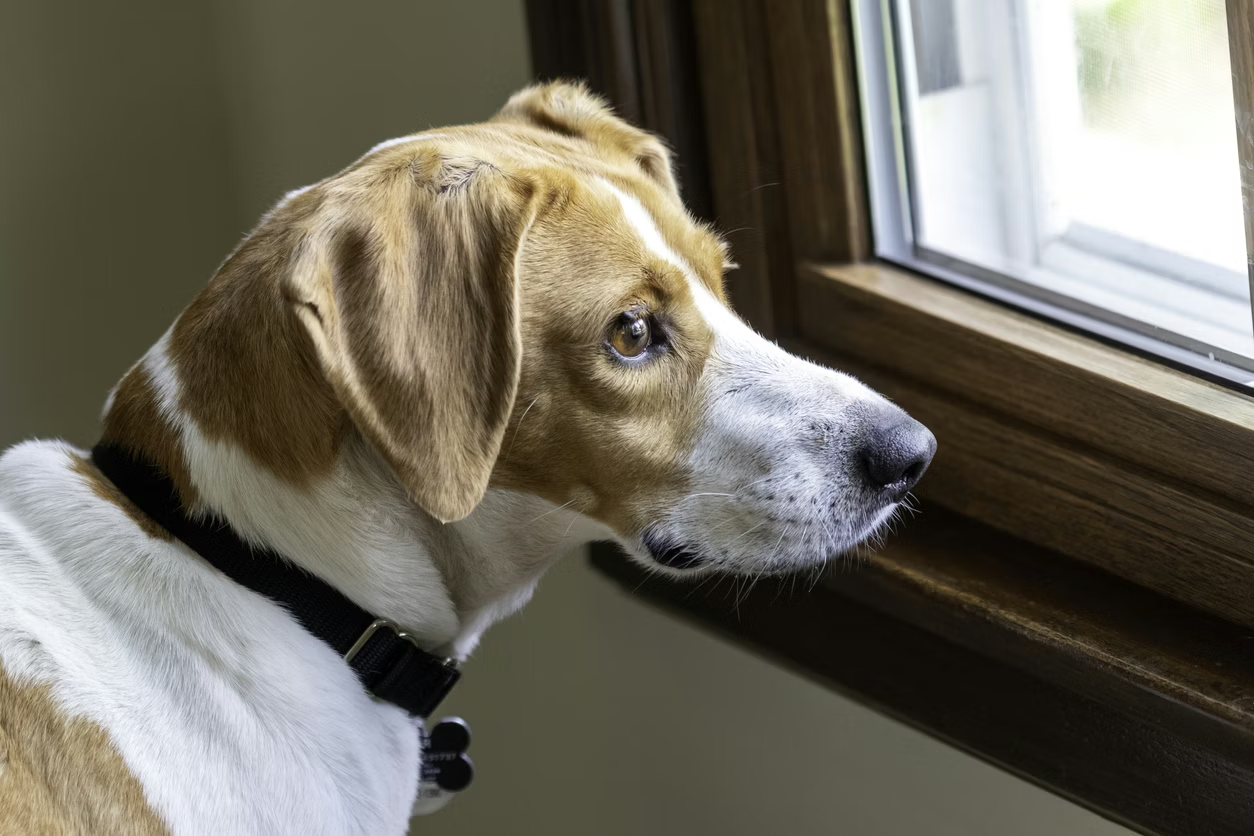Anxiety in dogs is more than just a behavioral quirk. It’s a condition that can impact a dog’s overall quality of life—and take a toll on pet parents. Anxiety can be caused by different factors, including genetics and environment, and present in many different ways. So the more you understand this condition, the better prepared you’ll be to help your pup live their best and happiest life.
Let’s dive in!
What is anxiety in dogs?
Anxiety is a feeling of nervousness or unease that comes when a dog anticipates an undesirable or scary event. Often, triggers for these anxious spells are formed based on a dog’s previous experiences. For example, a dog with separation anxiety may start showing signs of anxious behavior when it sees you pick up your car keys. The event your dog is anticipating is your departure, and the trigger for the anxiety is seeing you prepare to leave the house.
Anxiety in dogs can lead to other issues, including behavioral problems like aggression or excessive barking, health issues like skin or stomach problems, and a reduced quality of life. And since dogs can’t communicate their distress verbally, it’s important for pet parents to understand the causes and signs of anxiety so they can take action to help their pets.

Causes of anxiety in dogs
Several factors or combinations of factors can cause anxiety. Understanding what plays a role in your pup’s anxiety is helpful when determining what treatment options to pursue. Let’s take a look at some of the common causes.
Breed and genetics
Research indicates that breed and genetics can influence a dog’s predisposition to anxiety. For example, a study in Finland concluded that Lagotto Romagnolos, Wheaten Terriers, and mixed-breed dogs had a higher prevalence of noise-related anxiety (like fear of fireworks or thunderstorms) than other breeds, while Spanish Water Dogs, Shetland Sheepdogs, and mixed-breed dogs were more fearful in general.
Not sure if your pup’s genetics play a role? Wisdom Panel’s DNA testing can indicate if your dog has a higher likelihood of developing anxiety—and that’s information you can use to take proactive steps to reduce or prevent anxious behaviors.
Environmental factors
Like humans, dogs are influenced by their surroundings and daily activities. Changes in routine, lack of training and socialization, and not getting enough physical exercise and mental stimulation can all contribute to a dog’s development of anxious behaviors.
Aging
As dogs age, they may experience anxiety related to the physical and cognitive changes that come with getting older.
Cognitive dysfunction syndrome (CDS), often compared to Alzheimer’s disease in humans, is a condition in senior dogs that can lead to increased anxiety. Symptoms of CDS include disorientation, changes in sleep patterns, house soiling, and decreased social interactions. These changes can be confusing and frightening for older dogs, leading to heightened anxiety.
Additionally, loss of hearing or vision can make dogs more anxious as their ability to understand their environment diminishes. And chronic pain from conditions like arthritis can also contribute to anxiety, as their discomfort can make them less tolerant of changes or disruption.
Separation anxiety
Separation anxiety is a particular form of anxiety, but one worth calling out due to its prevalence and tendency to lead to destructive behaviors. Dogs with this condition become highly anxious when left alone by their pet parents. It’s common for dogs experiencing separation anxiety to bark excessively, chew on furniture or other household items, or attempt to break free from crates or confined rooms.
For a deep dive on separation anxiety, including how to prevent and treat the issue, check out our dedicated blog post on the topic.

Signs of anxiety in dogs
Recognizing the signs of anxiety in dogs is crucial for timely intervention. Common signs to look out for include:
- Excessive barking
- Aggression
- Restlessness or pacing
- Destructive behavior
- Trembling
- Panting
- Drooling
- A lapse in potty training
You should also familiarize yourself with dog body language that may indicate stress or anxiety. Postures or behaviors to be aware of include:
- Lip licking
- Yawning
- Whale eyes (wide eyes with the whites showing)
- Pinned back ears
- Tucked tail
If you notice any of these signs in your pup, consider making an appointment with your veterinarian. They can perform a thorough examination to rule out other causes and work with you on a treatment plan to manage your dog’s symptoms.
How to treat dog anxiety
Treating anxiety in dogs can involve a combination of behavioral training, environmental changes, and medication.
Behavioral training
Desensitization and counter-conditioning are common techniques used to treat anxiety.
Desensitization involves gradually exposing your dog to anxiety triggers in a controlled manner. For example, if your dog fears fireworks, you might play fireworks sounds at a low volume and gradually increase the volume as your dog gets more comfortable with the noise.
Counter-conditioning involves pairing an anxiety trigger with something your dog enjoys. For instance, if your dog gets anxious around a particular person, you can offer them a favorite treat whenever that person enters the room. Over time, they will begin to associate that person with getting to enjoy a tasty snack.
The training that will work best depends on your dog’s unique situation. A certified animal behaviorist or dog trainer is a great resource for devising specific training strategies for managing your dog’s anxiety.
Environmental changes
Dogs thrive when they know what to expect. Maintaining a consistent daily routine for feeding, exercise, and playing can provide stability and reduce anxiety. It’s also critical that dogs get enough mental and physical stimulation for their age and energy level. Some dogs may get this through daily walks, while others may need more vigorous exercise and puzzle toys to meet their needs.
Managing social interactions with people and other pets and creating a safe space for your dog to retreat can also help alleviate anxiety.
Anxiety meds for dogs
In some cases, medication may be necessary to manage anxiety. Common options include SSRIs and antidepressants for chronic anxiety and sedatives or anxiolytics for short-term predictable events like fireworks shows.
Your veterinarian may also recommend a pheromone diffuser to alleviate anxiety symptoms.
Final thoughts
Anxiety in dogs can stem from various sources, including environmental factors, aging, and genetic predispositions. By understanding what contributes to your dog’s anxiety, you and your veterinarian can take steps to manage and treat the condition and help your pup lead a happier, healthier life.
External research and resources:


















